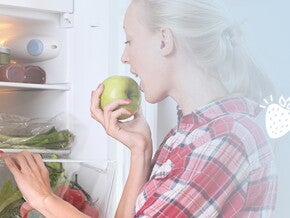
Using a Breast Pump
There are many reasons for wanting to express breastmilk. The most important decision is choosing a pump which suits your needs and situation, and then storing your breastmilk appropriately.
Breastfeeding bras and pads
- A breastfeeding bra, gives your baby easy access—one with flaps that open easily for breastfeeding. Although you will want to buy a few before you give birth, your breasts will grow once your milk has come in, so you might want to wait until after the birth to buy a few more. The band size should fit snugly on the loosest hook. Ask for assistance in the shop with someone experienced with fitting breastfeeding bras.
- A breastfeeding bra should provide good support. Avoid those with under wires, these place too much pressure on the breasts and may lead to blocked milk ducts or mastitis (infected milk ducts).
- Use breastfeeding pads that are absorbent and ventilate well. As needed, replace wet pads with dry ones to prevent chafing and bacterial growth.
Breastfeeding clothes
The idea behind breastfeeding clothes is to allow easy and potentially discreet access to your breast. There are specially designed breastfeeding blouses and sleepwear that have side slits to help you breastfeed discreetly and comfortably. Or simply invest in some inexpensive stretchy t-shirts that can easily be pulled down on one side or shirts with buttons down the front.
A comfortable breastfeeding chair
Select a chair that provides good back support and has armrests to help you comfortably sit up straight and your feet reach the floor comfortably. Over time, your body (especially your back and neck) will suffer if you’re posture is not well supported while you feed.
A good breastfeeding pillow
A good breastfeeding pillow adds comfort to both you and baby while breastfeeding. There are plenty of pillows out there specifically tailored to breastfeeding, but any firm pillow will do. A breastfeeding pillow assists by positioning baby at breast level, supporting their weight and helping maintain your proper posture as you won’t have to lean over or strain your back while breastfeeding. You may find a pillow is only necessary for the first few months while your baby is smaller and feeds are longer.
Breast Pump
In many instances, breast milk direct from mum will be more convenient and provides many added benefits such as skin-to-skin bonding. While early use of bottles, especially before the first breastfeed, can interfere with the natural processes of breastfeeding by reducing the infant’s sucking capacity and the stimulation of the mother’s breasts, there are many situations in which expressing breastmilk and feeding from a bottle may be required. Some of the most common reasons you may want to use a breast pump include:
- To stimulate your milk production when you are unable to breast feed your baby directly after birth, such as when your baby is premature or your baby is unable to suck adequately.
- You or your baby are in hospital and unable to feed them directly.
- To maintain your milk supply when you are away from your baby (eg. after returning to work).
- You are leaving your baby with a baby sitter while you are out.
- Many mothers like to store breast milk for emergencies, as exclusive breastfeeding is recommended for the first 4-6 months.
Choosing a pump
There are a large range of breast pumps on the market. You can choose from electric or hand held pumps and your choice may depend on how much you require or intend to use it.
Additional items
If you choose to use a breast pump, there are additional equipment you will need to attain, including:
- Breast milk storage satchels (available at chemists and supermarkets and baby specialist stores);
- Baby bottles and teats – there are a large variety of bottles and teats available and many mothers find they need to try a range of teats to find which one your baby will accept;
- Steriliser for cleaning all equipment.
Sterilisers
Breast pumps and bottles need to be dissembled and sterilised before each use. There is generally two methods of sterilisation: Either using cold water and adding a non-toxic sterilisation solution, available through pharmacies; or by using heat via a microwave or electric steam steriliser. If you are not using the equipment again straight away, you can simply wash the equipment and then sterilise before the next use.
Related articles


















